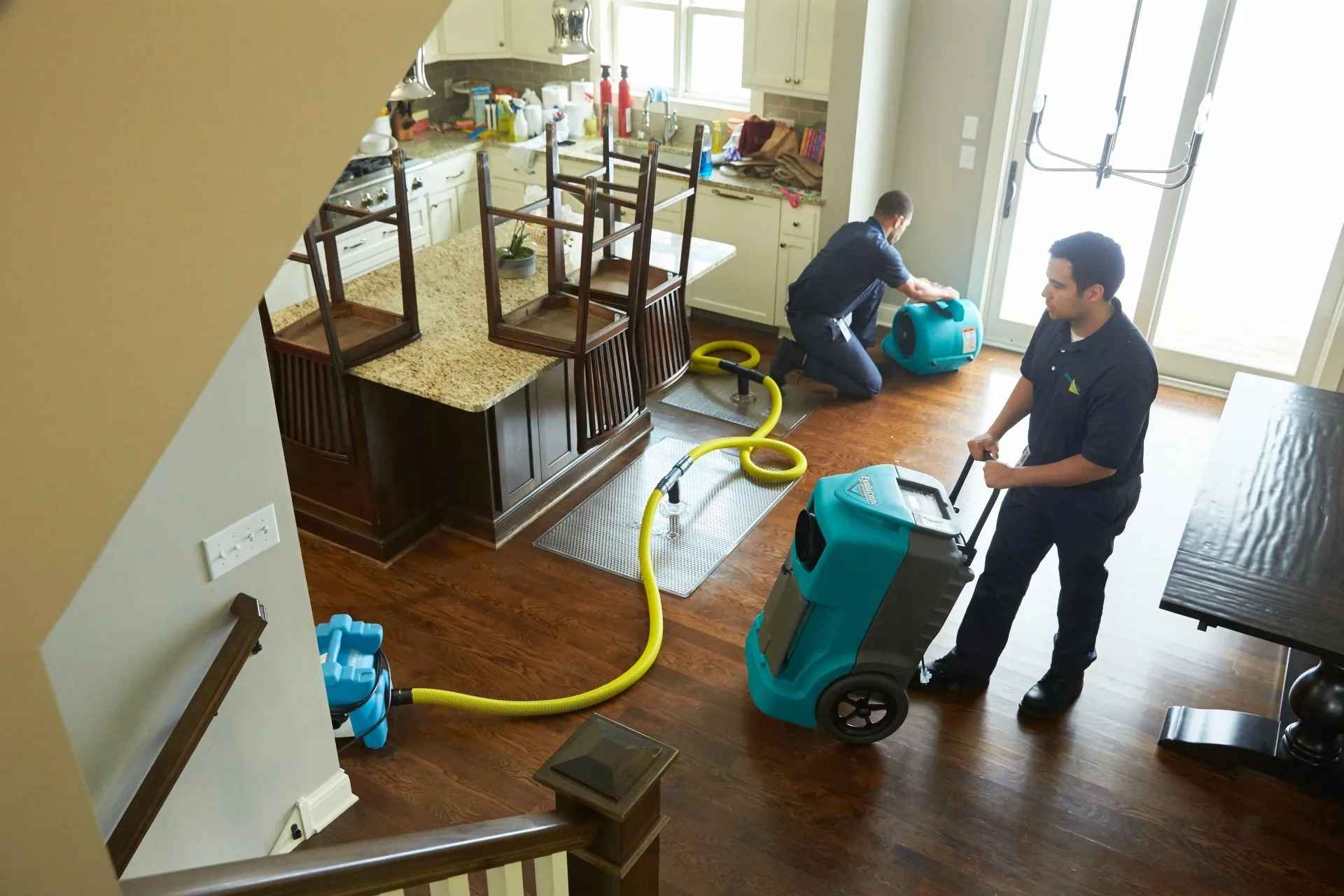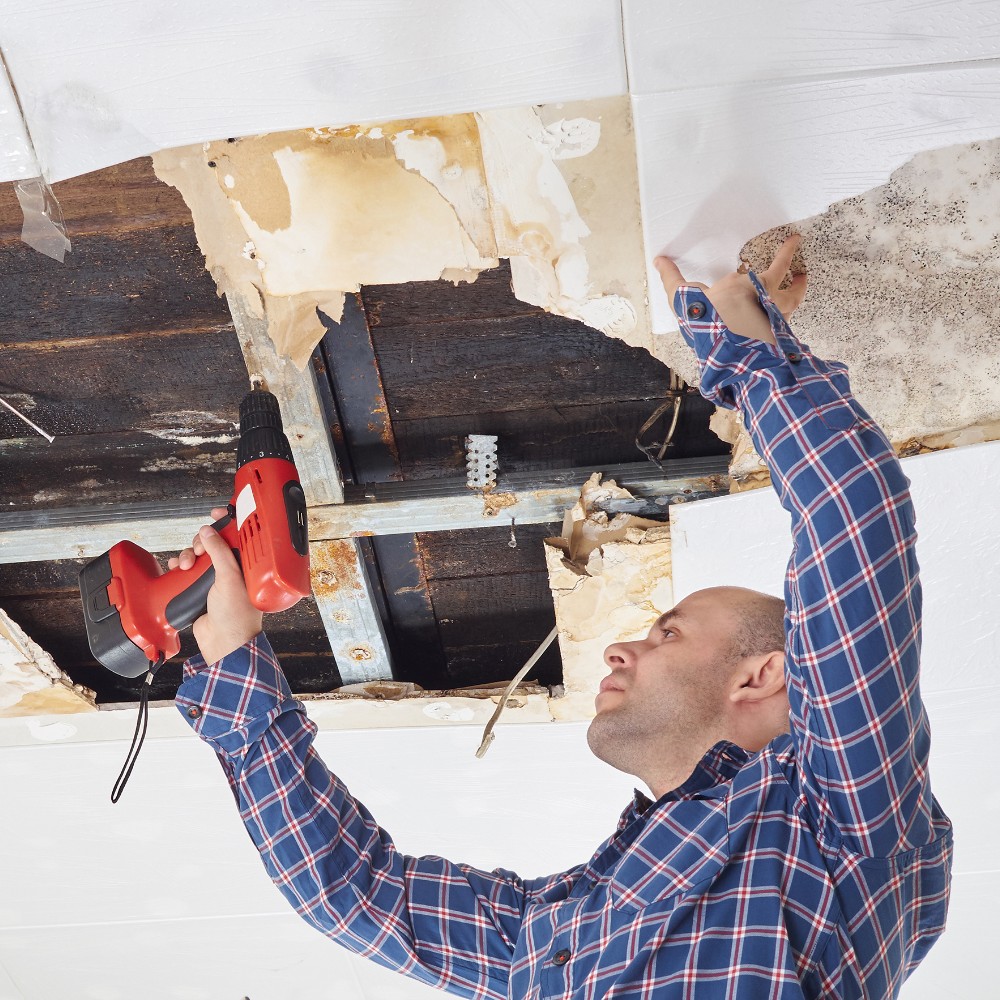What to expect from professional Water Damage Restoration
Wiki Article
Water Damage Restoration 101: Understanding the Process and Expense
Water damage can strike unexpectedly, leaving property owners in a state of confusion. Recognizing the reconstruction process is necessary for efficient recovery. From evaluating the damage to picking the ideal provider, each step impacts the general outcome and expense. Aspects such as the kind of water damage and seriousness additionally play a significant duty. What are the particular methods made use of in reconstruction, and how can one get ready for potential expenditures?Sorts Of Water Damage

Initial Evaluation and Inspection

Water Removal Strategies
Complying with the initial analysis, reliable water extraction techniques are utilized to minimize damage and prevent more problems. These methods involve using specialized devices such as industrial-grade vacuums and completely submersible pumps - Water Damage Restoration. The selection of technique depends on the quantity of water present and the kind of materials influenced. For standing water, submersible pumps are generally made use of for fast removal, while vacuums are excellent for extracting water from rugs and upholstery. In addition, advanced methods like water removal mats might be employed for hard-to-reach locations - Flood Cleanup Services. The goal is to remove as much water as possible, lessening the potential for mold growth and architectural damage. Motivate and reliable water removal is important in the general water damage repair procedureDrying Out and Dehumidification Process
As soon as the water removal is total, the drying out and dehumidification procedure becomes important to bring back the afflicted area. This stage typically utilizes industrial-grade dehumidifiers and air movers to successfully reduce wetness degrees. The dehumidifiers pull in moist air, getting rid of excess humidity, while air movers flow air to accelerate dissipation. Monitoring devices is frequently made use of to track humidity and temperature level degrees, making certain ideal drying out problems. The period of this process can vary relying on the extent of the water damage and environmental factors. It is important to extensively completely dry all affected materials, including wall surfaces, floor covering, and home click here furnishings, to avoid mold development and structural damage. Proper implementation of this action is crucial for a successful remediation result.Cleaning Up and Sterilizing Afflicted Locations
An extensive first analysis and examination of impacted areas is vital to recognize contamination levels as soon as the drying procedure is total. Flood Cleanup Services. Efficient cleansing methods and ideal items have to after that be utilized to remove particles and spots. Lastly, sanitization and disinfection methods are vital to ensure that damaging microorganisms are eliminated, bring back the room to a safe problemInitial Evaluation and Examination
Before beginning any type of repair initiatives, a comprehensive first analysis and evaluation of the influenced areas are essential for efficient cleaning and sanitizing. This procedure involves determining the extent of water damage, figuring out the resource of the water invasion, and evaluating the materials impacted. Examiners normally try to find indicators of mold and mildew growth, architectural honesty issues, and harmed possessions. The evaluation likewise includes examining wetness degrees using customized equipment to ensure no surprise water pockets remain, as these can cause more complications. Recording the findings is necessary for preparing the next steps in the restoration procedure. A detailed first analysis allows repair experts to devise a targeted approach for reliable cleansing and sanitizing, eventually decreasing damage and health and wellness threats.Cleaning Strategies and Products
Effective cleaning and sanitizing of water-damaged areas require a variety of methods and items customized to the certain materials influenced. For porous surface areas like drywall and carpets, extraction approaches are vital to eliminate excess dampness, complied with by deep cleansing with specialized detergents. Non-porous products such as tile or steel can be cleaned utilizing commercial-grade cleaners that properly eliminate pollutants. Heavy steam cleaning is an additional efficient method, particularly for carpetings and upholstery, as it uses heats to remove microorganisms and mold and mildew (Water Damage Restoration). Additionally, environmentally friendly items are significantly preferred for their security and efficacy - Mold Remediation After Water Damage. Inevitably, selecting the proper cleansing methods and items not just ensures instant sanitation however also aids in protecting against more damage and health and wellness threats related to water invasionSanitization and Disinfection Approaches
When dealing with water damage, correct sanitization and disinfection approaches are necessary to ensure the safety and security and health and wellness of the affected atmosphere. After initial cleaning, surfaces have to be treated with proper disinfectants to get rid of virus, mold, and microorganisms that flourish in wet problems. Typical approaches consist of making use of EPA-approved chemical disinfectants, which can be applied via spraying or wiping techniques. Additionally, ultraviolet (UV) light systems can successfully disinfect locations by counteracting bacteria without rough chemicals. The choice of method frequently depends upon the kind of materials impacted and the extent of contamination. Ultimately, extensive sanitization not only brings back a risk-free space but additionally helps stop future health and wellness risks connected with remaining wetness and mold and mildew development.
Repairs and Restoration Options
Evaluating the damage brought on by water direct exposure is important for establishing the appropriate repair work and remediation choices. Home owners might deal with numerous issues, including damaged drywall, distorted floor covering, and jeopardized structural elements. Depending upon the degree of the damage, fixings may involve replacing areas of drywall, setting up new flooring, or enhancing architectural beams. In cases of serious damage, complete substitute of damaged materials may be necessary. In addition, professional conservators frequently recommend using moisture meters to examine covert wetness levels prior to picking the ideal training course of activity. It is necessary to act quickly to stop mold and mildew growth and additional wear and tear. Choosing the appropriate choices not only recovers the home but additionally assures long-lasting safety and security and performance.Variables Influencing Restoration Prices

The degree of water damage straight impacts the repair sets you back property owners can anticipate to incur. Aspects such as the resource of the water, the duration of exposure, and the damaged materials greatly affect prices. As an example, clean water damage from a busted pipeline is usually much less costly to bring back contrasted to damage caused by sewage. Furthermore, the degree of contamination determines the need for specialized cleaning and disposal services, even more boosting costs. Geographical place likewise plays a function, as regional labor rates and accessibility of reconstruction solutions can differ. The seriousness of the response influences prices; quicker treatments normally lead to decrease overall costs by avoiding additional damage. Recognizing these factors is important for homeowners when estimating repair prices.
The 3 main types of water damage are categorized based on contamination levels: clean water, grey water, and black water. A comprehensive initial analysis and examination are crucial actions in the water damage repair process. For standing water, completely submersible pumps are usually utilized for fast removal, while vacuum cleaners are suitable for removing water from rugs and upholstery. The level of water damage directly influences the repair costs house owners can expect to sustain. Clean water damage from a broken pipeline is generally much less expensive to recover compared to damage created by sewer.
Report this wiki page